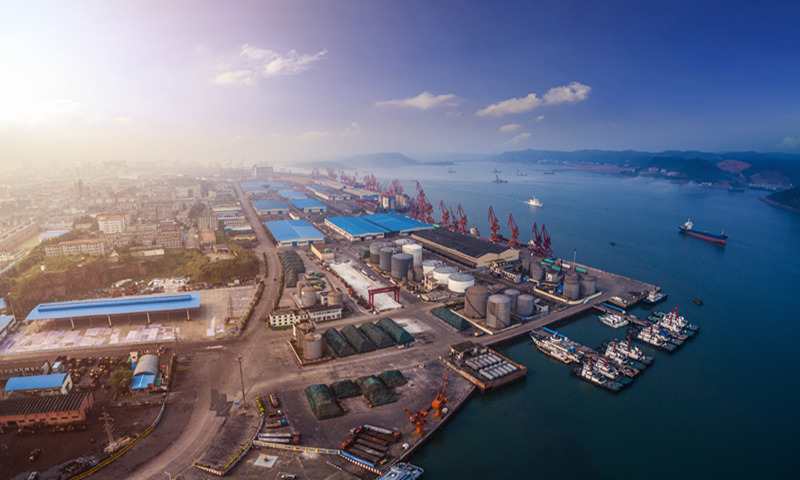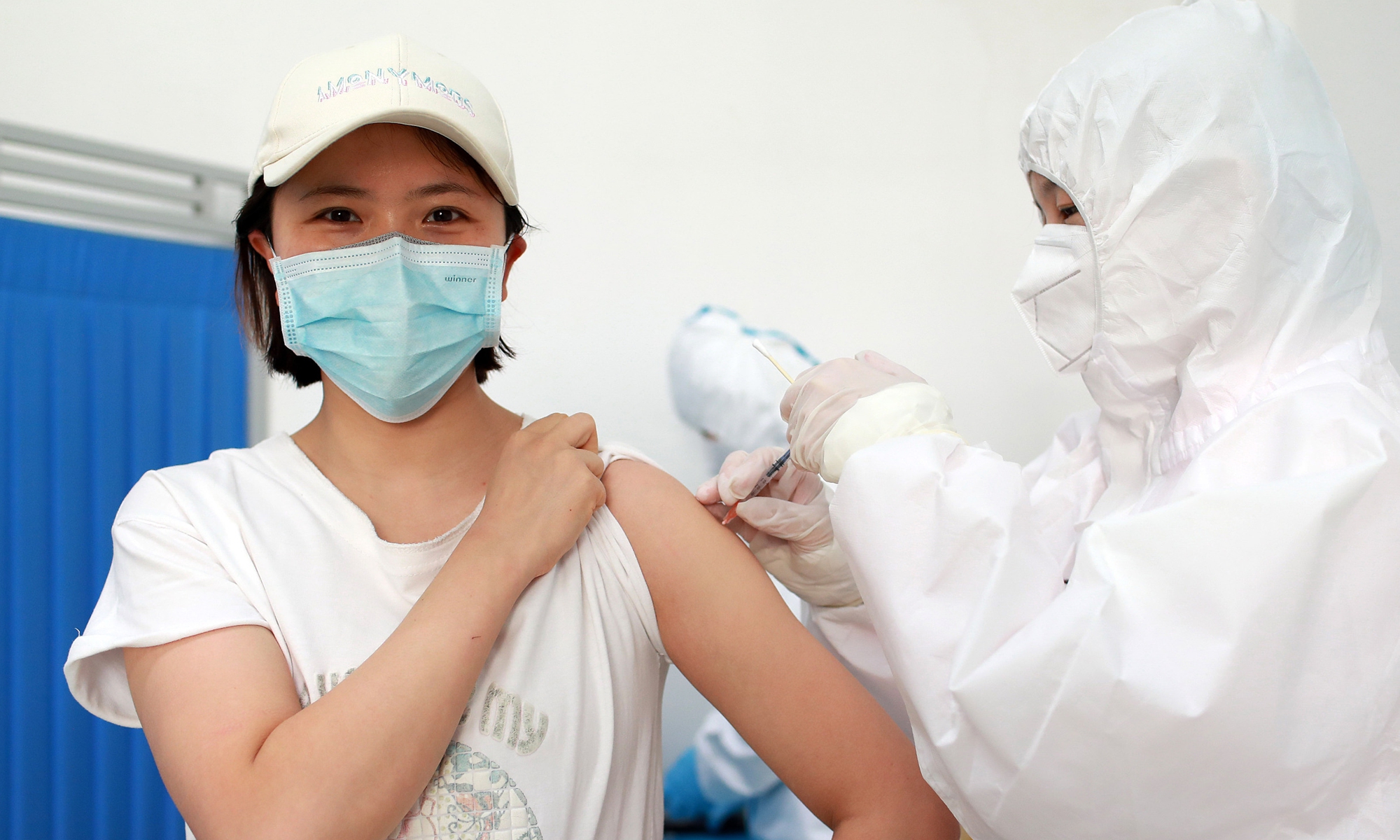China-ASEAN relations ‘most successful, vibrant model’ for cooperation in Asia-Pacific: Xi
By Zhang Dan and Hu Yuwei in Nanning and Li Xuanmin in Beijing Source: Global Times Published: 2020/11/27 9:36:03 Last Updated: 2020/11/27 10:27:45

Fangcheng Port in South China's Guangxi Zhuang Autonomous Region, which sits on the New International Land-Sea Trade Corridor route connecting Southwest China's Chongqing Municipality, the ASEAN and Singapore Photo: VCG
Chinese President Xi Jinping said on Friday that the China-ASEAN relationship has grown into the most successful and vibrant model for cooperation in the Asia-Pacific and an exemplary effort in building a community with a shared future for mankind, underscoring the strong momentum of cooperation and closer relations underpinned by mutual trust between China and ASEAN in the most recent “golden era” decade.
Xi delivered a speech via videoconference at the opening ceremony of the 17th China-ASEAN Expo and China-ASEAN Business and Investment Summit on Friday in Nanning, South China's Guangxi Zhuang Autonomous Region.
“China continues to regard ASEAN as a priority in its neighborhood diplomacy and a key region in high-quality Belt and Road cooperation,” Xi said. He noted that China welcomes the signing of the Regional Comprehensive Economic Partnership (RCEP) and looks forward to its early entry into force.
Xi also urged more efforts will be made to build the New International Land-Sea Trade Corridor, strengthen cooperation on infrastructure connectivity including railways, highways, ports, airports, power and communications, speed up the development of existing economic corridors and key projects, and continue to develop the China-ASEAN Multimodal Transport Alliance.

vaccine Photo:VCG
Xi also stressed that both China and ASEAN need to strengthen cooperation against COVID-19 and enhance capacity building in public health.
“When its COVID-19 vaccines are available for use, China will actively consider the needs of ASEAN countries,” Xi said, adding that China and ASEAN countries will step up information sharing and cooperation on the production, development, and deployment of vaccines.
China will also train for ASEAN countries 1,000 administrative and specialized personnel in the health sector between 2020 and 2022, according to Xi.
Observers said that the partnership between China and ASEAN is expected to become more well-rounded and pragmatic after the signing of RCEP, the world’s largest trade deal.
“The scope and depth of China-ASEAN business circle will be unprecedented, bringing more business opportunities to companies in the business circle,” Xu Liping, director of the Center for Southeast Asian Studies at the Chinese Academy of Social Sciences, told the Global Times.
The business circle, which includes ASEAN, the world’s fifth largest economy, and China, the world’s second largest economy, together generates around $18 trillion in GDP and covers a total population of 1.9 billion people.
It is a true example of multilateral cooperation that will help the region’s economy handle the fallout of the COVID-19 pandemic and rising protectionism, experts say.
Some business representatives and officials from ASEAN said they now pin their hopes on China providing a much-needed “shot in the arm” to boost regional economies, bringing more countries in the region on board the “express train” of China’s fast economic recovery.
“Other countries are experiencing a slowdown in trade and economic recovery, but trade between ASEAN countries and China has been increasing,” Arthayudh Srisamoot, Thailand’s Ambassador to China, told the Global Times, noting that Thailand cannot afford to miss such a good opportunity brought by closer business cooperation with the Chinese market.
In 2020, ASEAN took over the EU to become China’s largest trading partner, marking a milestone in regional cooperation. In the first 10 months of 2020, bilateral trade volume reached 3.79 trillion yuan, up 7 percent year-on-year. And from 2010 to 2019, bilateral trade had been expanding at a stunning rate of 9.4 percent annually, promoting mutual prosperity.
The growth of bilateral trade has been quick since the signing of the China-ASEAN free trade agreement (FTA) in 2010, and an upgraded protocol of the FTA was implemented in 2019.
It is likely that ASEAN – one of the world’s three largest value chain regions alongside Europe and North America – will take the lead in terms of its economic revival thanks to such solid cooperation and the RCEP, which facilitates trade and investment to mature the regional commercial circle, observers said.
With trade tariff barriers to be removed after the RCEP takes effect, China may import more fruits and raw materials from ASEAN countries and export more of its textile, mechanical and electrical products to the bloc, enabling both sides to feel the enormous capacity and significance of each other’s markets, according to Xu.
China and ASEAN could work together to restructure and shorten their industrial chains, in order to fend off the risks of a lengthy industrial chain disrupted by the pandemic.
“Some goods that were supposed to be exported to the US and Europe could also be manufactured and sold within the business circle,” Xu said.
Officials and participants also took note of huge cooperation potentials in the public health sector which China could provide rich experience with.
“China’s early assistance in giving out millions of facemasks to ASEAN has been much appreciated, and China’s vaccine development and its availability to ASEAN countries will enable Southeast Asian governments and peoples to overcome the pandemic’s effects at the earliest possibility,” Nalinee Taveesin, Chairperson of Foreign Affairs of Pheu Thai Party, said at a dialogue between the CPC and party politicians of South East Asian countries on Thursday.
Posted in: SOCIETY